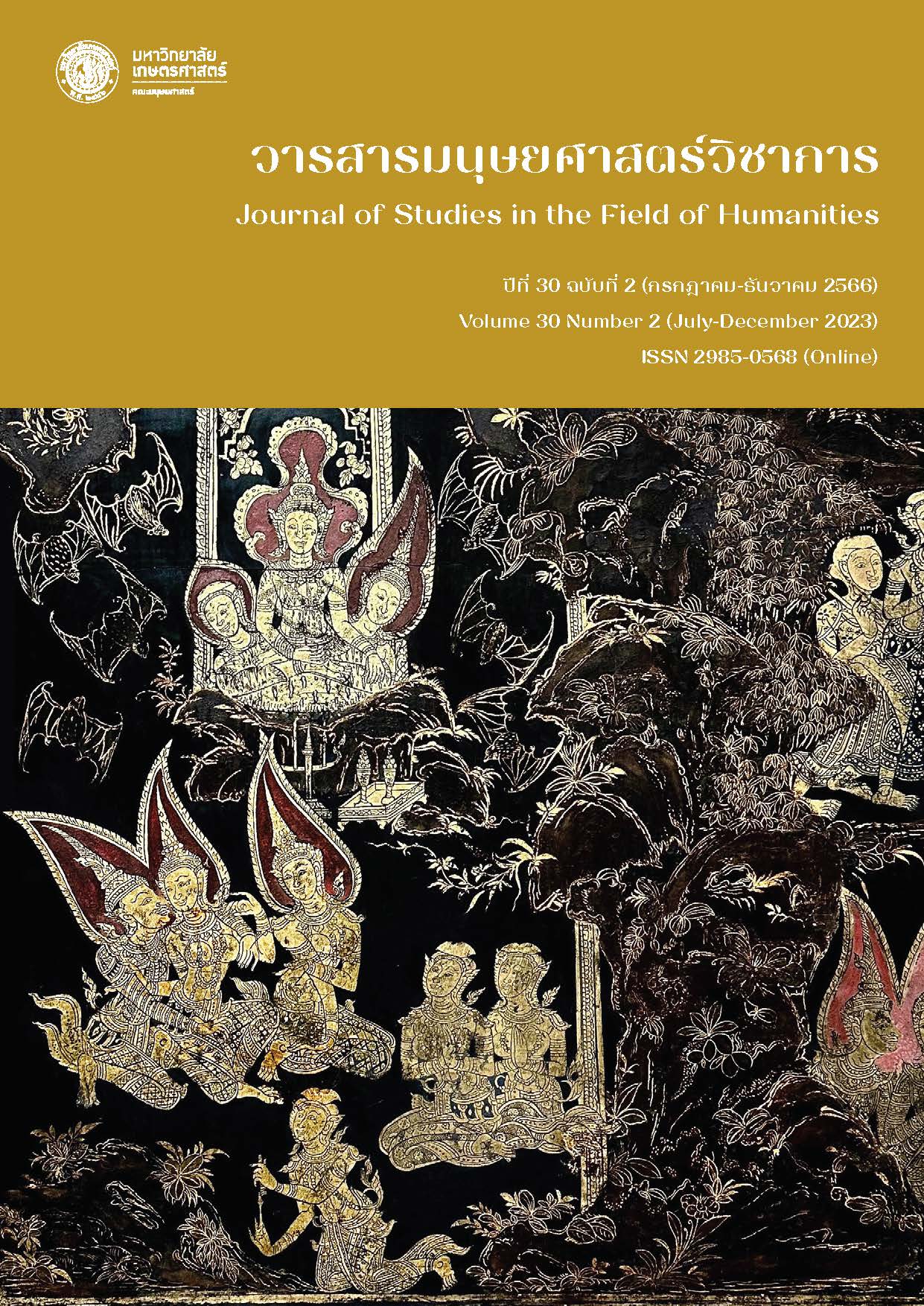Narratives in Literature Textbooks: Storytelling Strategies and Female Identity Construction in Socialist Laos, 1975-1993
Main Article Content
Abstract
This article analyzed narratives in literature textbooks in order to understand strategies of storytelling and the construction of female identity in Lao Literature textbooks. The article examined the post-revolutionary literature between 1975-1993, which marks the era of changes in the educational system and structure. The education system is instrumental to the development of the country and serves as a communication tool between the Lao government and the emerging generations. Apart from fostering the perceptions and understanding about the new regime, the system contributes to the preparation of citizens for, as well as creates social values in accordance with, the political ideology of the new governance and society. The study revealed that, from 4 volumes of the literature textbooks at the secondary school level, 14 stories with a storyline and characters related to women were presented. It was found through studying composition of the narratives that the Lao literature textbooks depict female characters as a smart, selfless, and devoted follower of the socialist and state ideology. At the same time, the traditional ideal woman still retains the image of a good mother and a dutiful wife. Thus, these textbooks emphasized the roles of women in family and society, especially their selfless contribution, and praised hard working women from the perspective of new social system and new socialist generation.
Article Details

This work is licensed under a Creative Commons Attribution-NonCommercial-NoDerivatives 4.0 International License.
References
กระทรวงศึกษา กีฬาและธรรมการ. (1978ก). วรรณกรรมมัธยม 1 สามัญศึกษา. ม.ป.ท.
กระทรวงศึกษา กีฬาและธรรมการ. (1978ข). วรรณกรรมมัธยม 2 สามัญศึกษา. ม.ป.ท.
กระทรวงศึกษา กีฬาและธรรมการ. (1978ค). วรรณกรรมมัธยม 3 สามัญศึกษา. ม.ป.ท.
กระทรวงศึกษา กีฬาและธรรมการ. (1978ง). วรรณคดีชั้นอุดม 1. ม.ป.ท.
จารุวรรณ ธรรมวัตร, ประภาส สุวรรณศรี และพรสวรรค์ สุวรรณธาดา. (2544). การกล่อมเกลาทางสังคมจากแบบเรียนระดับประถมศึกษาในสาธารณรัฐประชาธิปไตยประชาชนลาว พ.ศ. 2518-2538. ใน กาญจนี ละอองศรี (บ.ก.),
ลาวฮู้หยัง-ไทยรู้อะไร: วิเคราะห์แบบเรียนสังคมศึกษา (น. 163-269). กรุงเทพฯ: อัลฟ่าพับลิชชิ่ง.
ดวงเดือน บุนยาวง. (2547). ตัวตนผู้หญิงลาวในงานวรรณกรรม. เชียงใหม่: ศูนย์สตรีศึกษา คณะสังคมศาสตร์ มหาวิทยาลัยเชียงใหม่ .
นรินทร์ พุดลา. (2550). พรรคประชาชนปฏิวัติลาวกับการสร้างตัวตนทางวัฒนธรรม. วารสารปาริชาต, 19(2), 31-44.
นรินทร์ พุดลา. (2551). ตัวตนทางวัฒนธรรมในแบบเรียนลาว (วิทยานิพนธ์ดุษฎีบัณฑิต สาขาวิชาไทศึกษา). มหาวิทยาลัยมหาสารคาม, มหาสารคาม.
วิลุบล สินธุมาลย์. (2554). การรับรู้ประวัติศาสตร์ความสัมพันธ์ไทย-ลาว: ผ่านแบบเรียนประวัติศาสตร์ไทยและลาว ชั้นมัธยมศึกษาปีที่ 1-6 (ค.ศ. 1975-2009) (วิทยานิพนธ์มหาบัณฑิต สาขาวิชาประวัติศาสตร์ศึกษา). มหาวิทยาลัยศิลปากร, นครปฐม.
วิสิฏฐ์ คิดคำส่วน. (2561). ภาพลักษณ์ความงามของผู้หญิงลาวในวรรณคดีลาว. วารสารมนุษยศาสตร์และสังคมศาสตร์ มหาวิทยาลัยอุบลราชธานี, 9(1), 202-223.
สถาบันค้นคว้าวิทยาศาสตร์การศึกษา. (2017). 30 ปี แห่งการสร้างตั้งและเติบใหญ่ขยายตัวของสถาบันค้นคว้าวิทยาศาสตร์การศึกษา. เวียงจันทน์: โรงพิมพ์สีสะหลาด.
อุมารินทร์ ตุลารักษ์. (2550). แม่หญิงในวรรณกรรมลาวร่วมสมัยหลังการปฏิวัติฃาติประชาธิปไตย ค.ศ. 1975 (วิทยานิพนธ์ดุษฎีบัณฑิต สาขาวิชาไทศึกษา). มหาวิทยาลัยมหาสารคาม, มหาสารคาม.
อุมารินทร์ ตุลารักษ์. (2553). ภาพแทนผู้หญิงในวรรณกรรมในแบบเรียนลาว ชั้นมัธยมศึกษาปีที่ 3 เรื่อง “คนงาม”. มนุษยศาสตร์สังคมศาสตร์, 27(3), 22-23.
Chatman, S. (1980). Story and Discourse: Narrative Structure in Fiction and Film. Ithaca: Cornell.
Fludernik, M. (2009). An Introduction to Narratology. London: Routledge. University Press.


